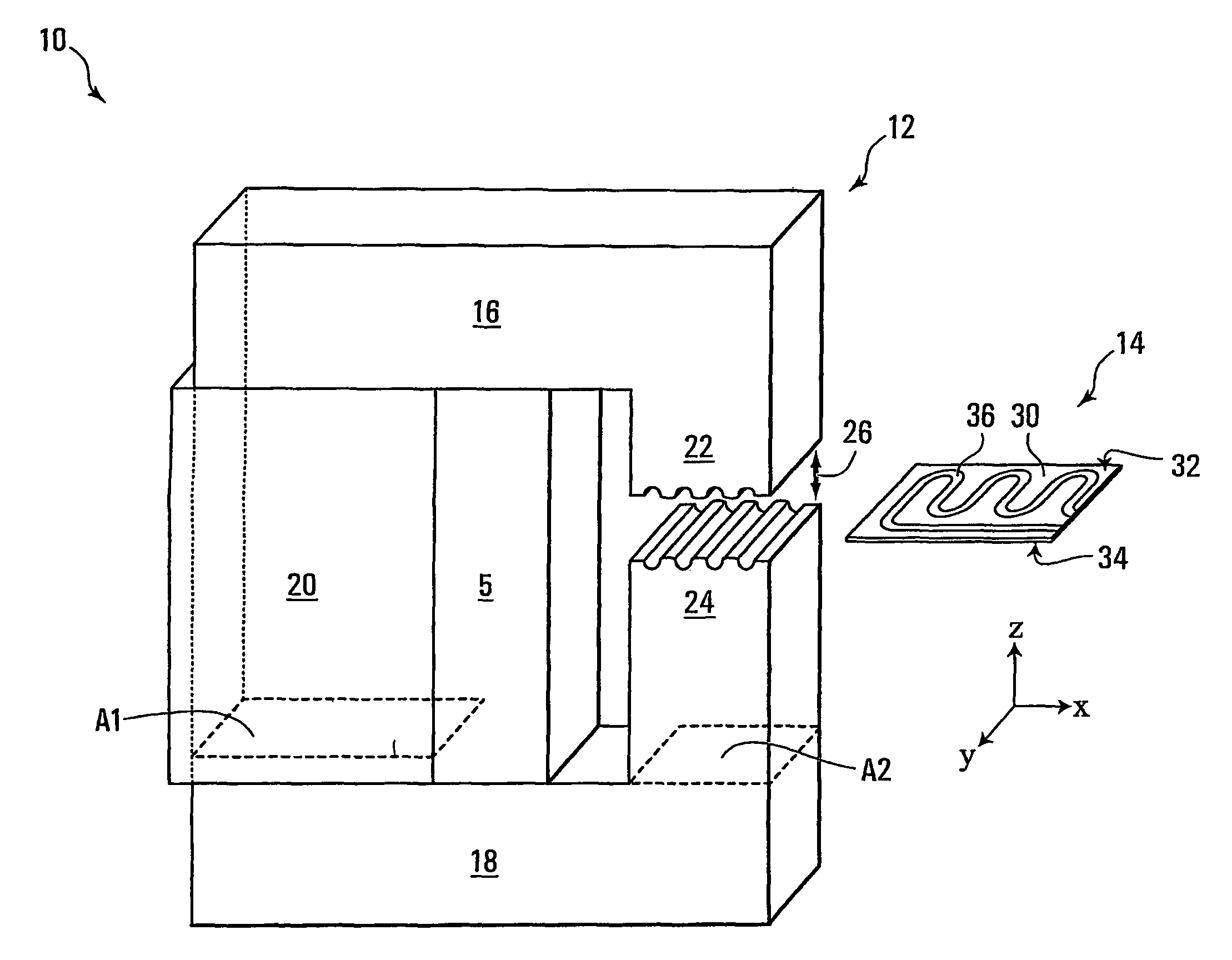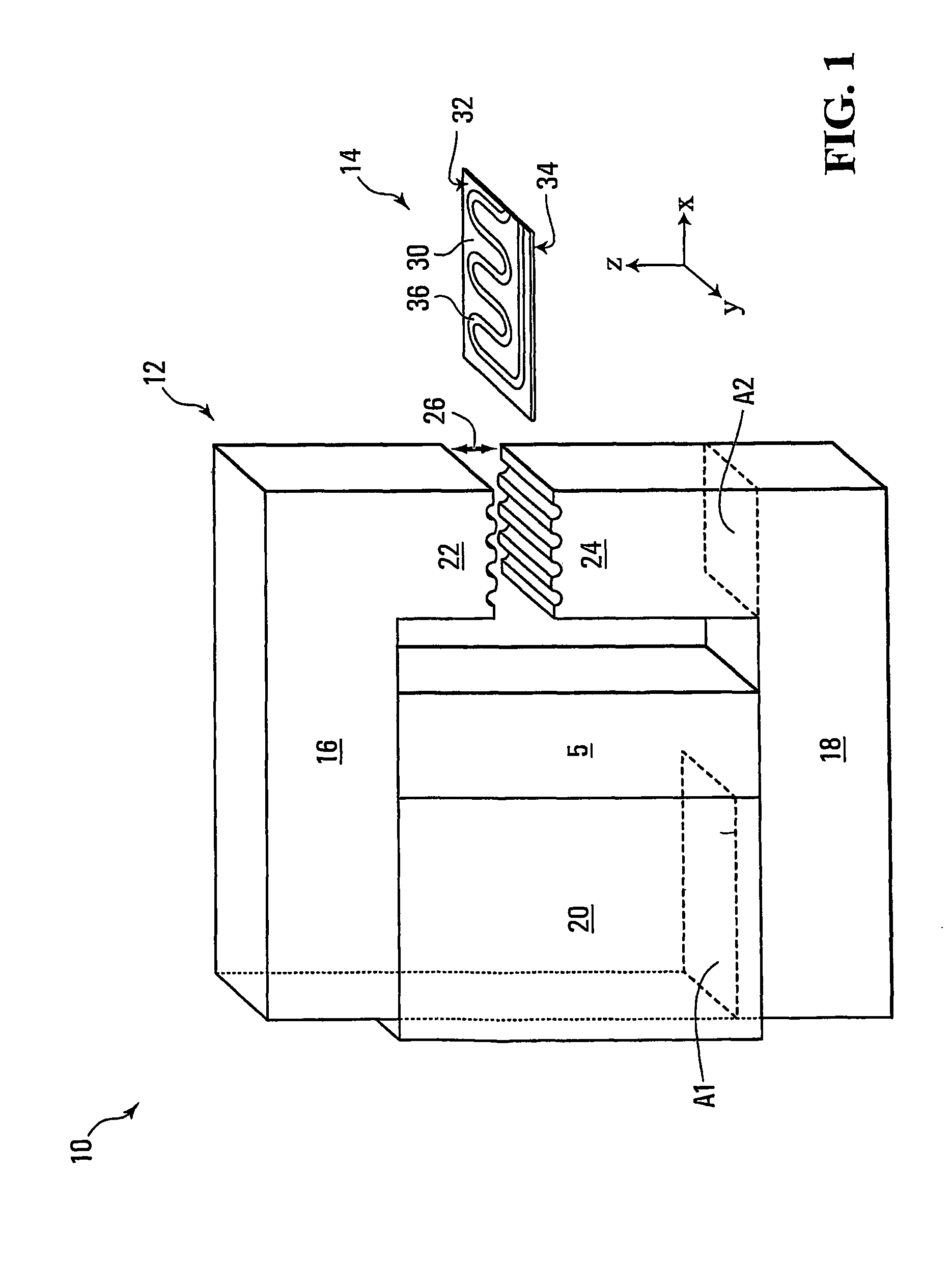Microfluidic separation system
a technology of microfluidics and separation systems, applied in the field of microfluidics, can solve the problems of reducing the number of effective binding sites to targets, unable to form stable colloidal suspensions, and low surface-to-volume ratio of larger magnetic particles compared to smaller ones
- Summary
- Abstract
- Description
- Claims
- Application Information
AI Technical Summary
Benefits of technology
Problems solved by technology
Method used
Image
Examples
Embodiment Construction
[0044]With reference to FIG. 1, there is shown a microfluidic separation system 10, which includes a magnetic separator 12 and a microfluidic chip 14. The magnetic separator 12 includes a first magnetically conductive member 16 and a second magnetically conductive member 18. Also provided is a magnetic energy source 20 that is connected to the first and second members 16, 18. In some non-limiting embodiments, the magnetic energy source 20 may be a permanent magnet or an arrangement (e.g., a stack) of permanent magnets. Non-limiting examples of suitable permanent magnets are those made from a rare earth material, such as Nd—Fe—B. In other non-limiting embodiments, the magnetic energy source 20 may be an electromagnet subjected to direct current (DC) or alternating current (AC). The strength of the magnetic energy source 20 is not particularly limited. For example, a suitable minimum value for the maximum magnetic energy is 40 MGOe (mega giga oersteds), although other values for the m...
PUM
| Property | Measurement | Unit |
|---|---|---|
| diameter | aaaaa | aaaaa |
| thicknesses | aaaaa | aaaaa |
| diameter | aaaaa | aaaaa |
Abstract
Description
Claims
Application Information
 Login to View More
Login to View More - R&D
- Intellectual Property
- Life Sciences
- Materials
- Tech Scout
- Unparalleled Data Quality
- Higher Quality Content
- 60% Fewer Hallucinations
Browse by: Latest US Patents, China's latest patents, Technical Efficacy Thesaurus, Application Domain, Technology Topic, Popular Technical Reports.
© 2025 PatSnap. All rights reserved.Legal|Privacy policy|Modern Slavery Act Transparency Statement|Sitemap|About US| Contact US: help@patsnap.com



